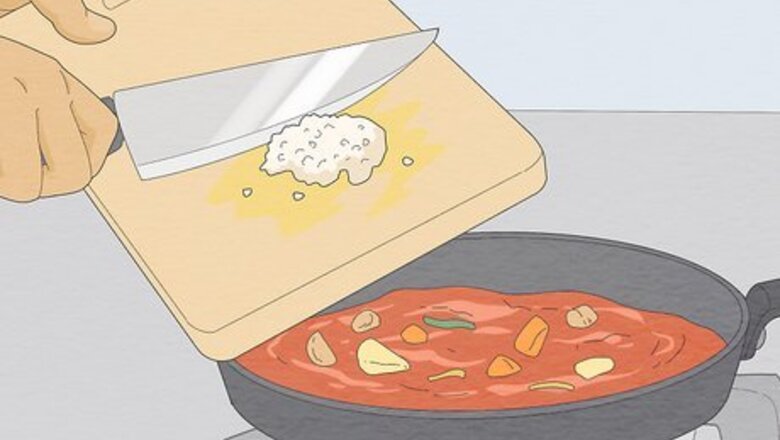
views
X
Research source
If you're looking for a natural remedy for back pain, you might try garlic, which has anti-inflammatory properties that can help with back pain.[2]
X
Expert Source
Karina Klimtchuk, L.Ac., DACM, Dipl. OMLicensed Acupuncturist & Diplomate of Oriental Medicine
Expert Interview. 25 August 2021.
It sounds crazy, but one 2021 study in Evidence-Based Complementary and Alternative Medicine demonstrates that consuming at least 400 mg of garlic a day can dramatically reduce lower back pain in as little as 12 weeks![3]
X
Trustworthy Source
PubMed Central
Journal archive from the U.S. National Institutes of Health
Go to source
Including Garlic in Your Diet
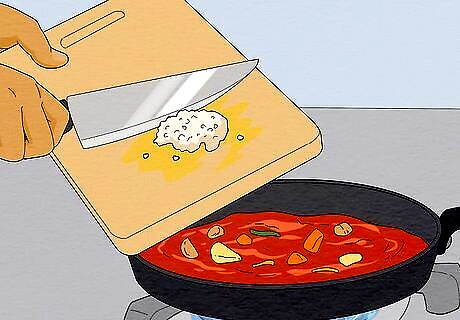
Add garlic as a seasoning on most foods. Garlic complements any savory dish, so stock up your spice cabinet with powdered and minced garlic that you can add to dishes and sauces you already make. This adds an anti-inflammatory boost to any meal. While fresh garlic gives you the most anti-inflammatory benefits, prepared spice forms are also beneficial. Garlic has diallyl disulfide, which helps block the effects of pro-inflammatory molecules in your body.
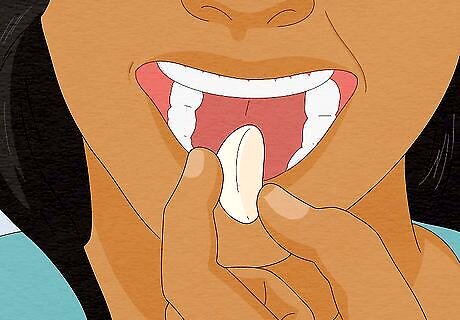
Eat raw garlic to get the most benefit. While you'll still enjoy some anti-inflammatory benefits from garlic in your food, heat does cook down the beneficial enzymes. Try having a couple of cloves of garlic first thing in the morning and see if you notice a difference. Combine garlic with apples, parsley, spinach, or lemon juice to avoid garlic breath after eating raw garlic. If you can't handle eating raw garlic, you might take a supplement instead. Garlic supplements are available online and wherever herbal and nutritional supplements are sold. Talk to your doctor before you start taking a garlic supplement, especially if you're taking other medications. Garlic supplements can interfere with the effectiveness of medications and other supplements.

Eat other anti-inflammatory foods in addition to garlic. Include at least 4-5 servings of anti-inflammatory fruit and vegetables every day. Food with anti-inflammatory properties, including garlic, help reduce the inflammation in your back so it hurts less and heals faster. Anti-inflammatory vegetables include tomatoes and green leafy vegetables such as spinach, kale, and collards. Anti-inflammatory fruits include strawberries, blueberries, cherries, and oranges. Aim for a variety of fruits and vegetables in your diet each day for maximum nutritional value. Think in terms of "eating the rainbow" at each meal.
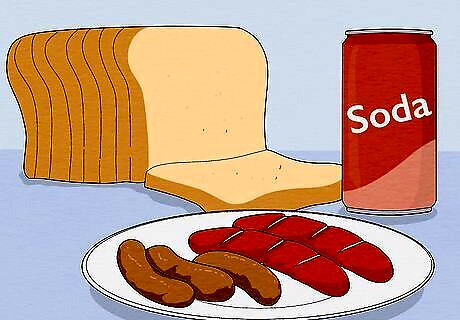
Avoid or limit foods that cause inflammation. Refined carbohydrates (such as white bread and pastries), fried foods, soda and sugary drinks, red meat, processed meats (sausage or hot dogs), and margarine are known to cause inflammation. Try to eliminate these types of food from your diet. Most of these foods have healthier substitutes. For example, you can substitute white bread and pasta for whole-grain bread and pasta.
Rubbing Garlic Oil on Your Skin
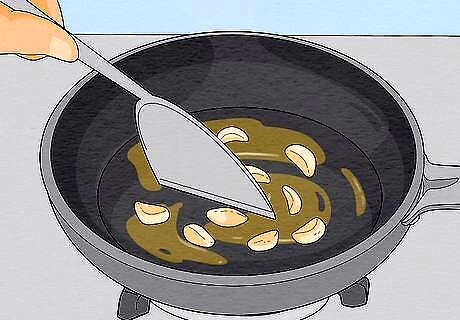
Fry 10 cloves of garlic in 2 fluid ounces (59 mL) of coconut or sesame oil. Heat the oil to boiling, then decrease the heat to low and drop in the cloves of garlic. Stir occasionally and let the cloves simmer until they're brown. If you've chopped or minced the garlic, let it sit for 5-10 minutes before frying it. The enzymes need a little time to start working.
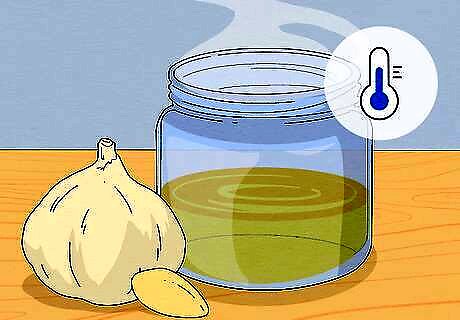
Strain the oil into a small glass jar and wait for it to cool. Strain the cloves out of the oil. Unless you're going to eat them immediately, discard them. Set the jar on a counter until it's cooled to room temperature. After you've used the garlic oil that you need, put the rest in the refrigerator. It'll be fine if you use it in the next 2-3 days.
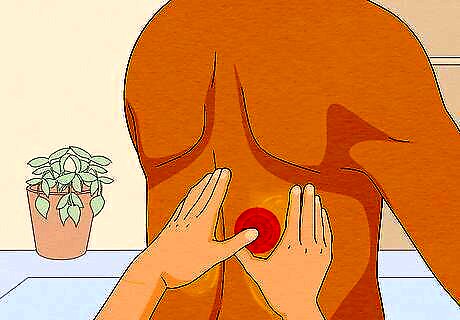
Apply the oil liberally to parts of your back that are sore. Smooth the oil into your back, massaging the sore areas gently. If you can't reach the parts of your back that are sore, get a friend or family member to help you. If you've never put garlic oil directly on your skin, apply it first to a small area and wait a few hours to see if there's any reaction. If you develop a rash, avoid putting it on your back.
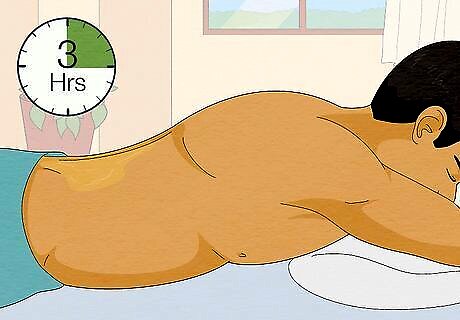
Leave the oil on your skin for up to 3 hours. There's not really specific guidance available as to how long you should leave garlic oil on your skin, but you do want to allow it to soak in to get the maximum benefit. After about 3 hours, though, you're not likely to get any additional benefit.
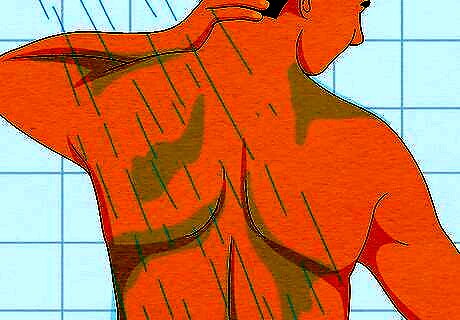
Take a warm bath or shower to rinse the oil. Wash the oil off gently with soap and warm water. A longer soak in warm water can feel especially soothing on your sore back.
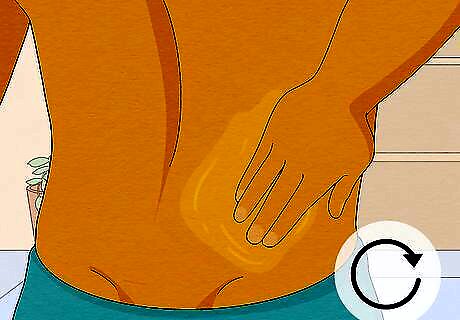
Repeat daily as needed for back pain. While there hasn't been much research into the topical use of garlic and garlic oil, it's generally safe. If it provides relief for you, feel free to use it every day or whenever your back starts giving you trouble.
Caring for a Sore Back
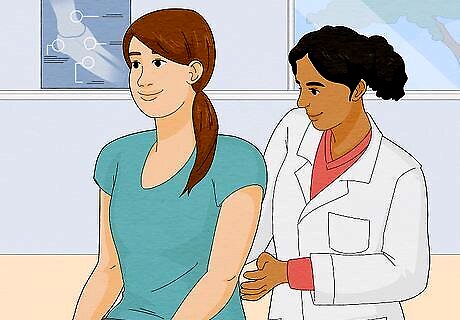
See your doctor if your back pain lasts longer than a week. Back pain that doesn't get better within a week after it starts could be a sign of a more serious injury, so it's a good idea to get it looked at. Similarly, if you have pain or numbness in your legs, that could indicate a more serious nerve problem.

Walk or do other light exercise every day. If your back hurts, you might think you should rest more, but actually, the opposite is true. While you should stay away from vigorous activity and contact sports, staying active will help your back heal more quickly. If you're overweight, talk to your doctor about a weight loss plan. Maintaining a healthy weight can help prevent back pain.
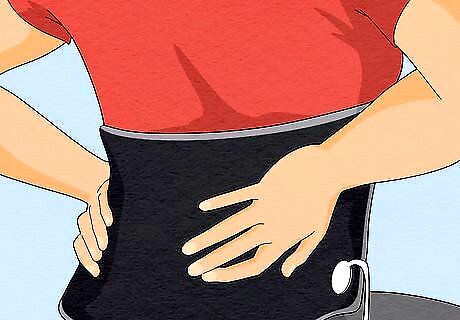
Use a heating pad while resting. A heating pad on a low setting can ease inflammation and relax muscles in your back to make it feel better. Make sure to put a towel or a blanket between your skin and the heating pad so it doesn't overheat your skin. Generally, it's safe to leave the heating pad on for 15-20 minutes. On the lowest setting, you might be able to leave it on for longer, but talk to your doctor about it first. Most heating pads have an automatic shut-off so you don't have to worry about leaving it on for too long if, for example, you fall asleep.


















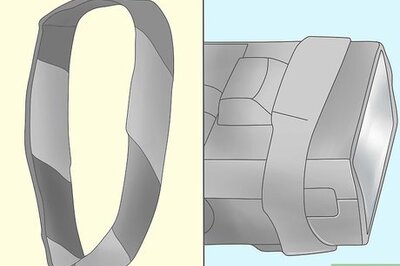

Comments
0 comment